NISM Newsletter - March 2021

Issue 4, March 2021
Editorial
by Dr. Emile HAYE, Postdoctoral Researcher at the Laboratory of Nuclear Reactions (LARN)
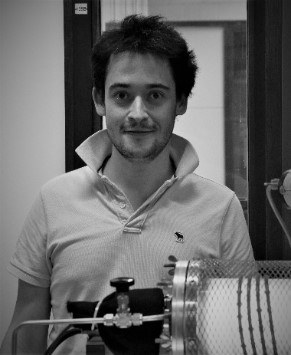
After the word “remote” used by Francesca in the last newsletter for describing 2020, what do you think about “materialization” for 2021?
As researchers, we were not involved in teaching duties, then the lockdown allowed us to update the bibliography and think about new projects.
2021 will be the year to develop and realize these new projects. The NISM institute will help us in this task.
NISM is currently under evaluation, and new features are going to be implemented. The new team wants to offer more possibilities to young researchers that represent the majority of the members. Let’s materialize these possibilities, and work together. New funding possibilities should be proposed, in addition to the already available travel grant (I hope that we will be able to attend conferences, in real!).
Since its creation in 2017, the institute sustains its momentum, and we must continue for 2021, through internal and external collaborative projects, publications, and communications.
2020 was a difficult year, but let us be optimistic. Don't look at the half-empty glass, because it is twice too big.
News
NISM Members worked at making the first celebration of the International Day of Women and Girls in Science at UNamur a great succes #WomenInScience @UNamur
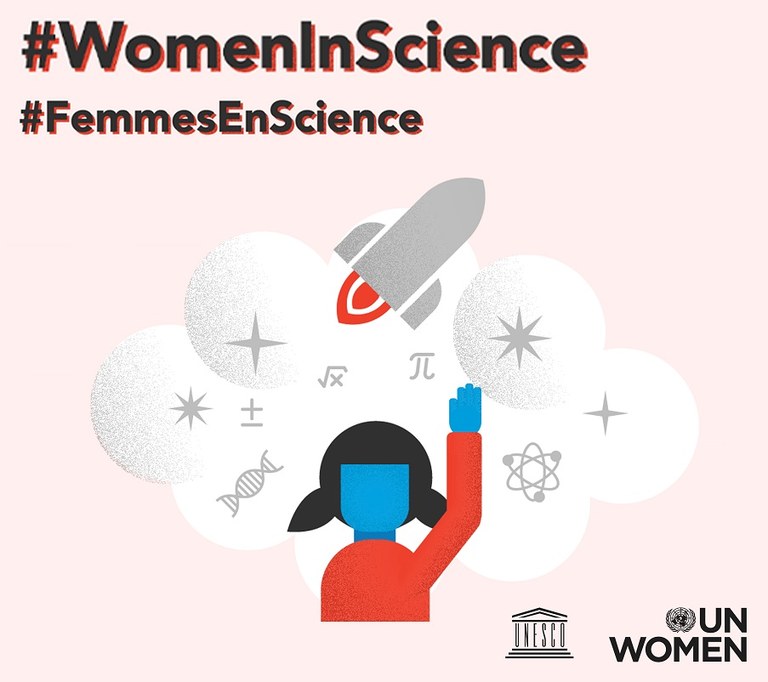 Thanks to an initiative by Sébastien Mouchet (NISM – Laboratory of Solid-State Physics), Lorena Ballesteros Ferraz (NISM, NaXys – Laboratory of Lasers and Spectroscopies), and Aishwarya Saxena (Narilis - URBM), for the first time the University of Namur celebrated the International Day of Women and Girls in Science, on February 11th 2021. Sébastien, Lorena and Aishwarya noticed the lack of dedicated celebrations of this worldwide event at UNamur, and decided to fill this gap. With the support of the Research Support Unit (UAR) and Confluent des Savoirs (CDS), they organized a scientific conference for the university community and an outreach event, which made this first edition a real success, with more than 150 attendees at the scientific conference and 200 attendees connected live to the outreach event.
Thanks to an initiative by Sébastien Mouchet (NISM – Laboratory of Solid-State Physics), Lorena Ballesteros Ferraz (NISM, NaXys – Laboratory of Lasers and Spectroscopies), and Aishwarya Saxena (Narilis - URBM), for the first time the University of Namur celebrated the International Day of Women and Girls in Science, on February 11th 2021. Sébastien, Lorena and Aishwarya noticed the lack of dedicated celebrations of this worldwide event at UNamur, and decided to fill this gap. With the support of the Research Support Unit (UAR) and Confluent des Savoirs (CDS), they organized a scientific conference for the university community and an outreach event, which made this first edition a real success, with more than 150 attendees at the scientific conference and 200 attendees connected live to the outreach event.
Carmela Aprile (NISM – CMA laboratory of Applied Materials Chemistry) and Coraline Stasser (NISM – LARN Research Unit for Analysis by Nuclear Reactions) contributed to the scientific conference with two oral papers entitled "Porous catalysts for the efficient and sustainable upgrading of glycerol” and “A low noise experiment for the search of neutron hidden neutron transitions in the context of braneworld scenarios”, respectively, while Francesca Cecchet (NISM- Laboratory of Lasers and Spectroscopies) chaired the first session of the meeting.
NISM thanks the organizers for having introduced this practice at UNamur, and is particularly proud of the active participation and attending of his/her young career researchers in this activity.
Recording of both events can be watched online, scientific meeting [English]:
On Teams (for post-meeting attendance, click on "Watch on the web instead" and "Join anonymously", without signing in).
Outreach event [French]: on Youtube
Innovative medical tools development for COVID-19 testing
By S. Penninckx and S. Lucas
During the first wave of Covid-19, supply of nasopharyngeal swabs turned out to be insufficient to cover Covid-19 testing needs and rapidly became a critical bottleneck to the expansion of diagnostic capacity in Belgium. Besides swab shortages, other drawbacks reported with commercially available devices are the swabbing‐induced discomfort and the potential contamination risks while handling samples.
To address these issues, Prof. Stéphane Lucas's team driven by Principal Investigator S. Penninckx (UNamur, Laboratory of Analysis by Nuclear Reaction - LARN) had the idea to develop optimized sampling devices using 3D printing and plasma surface treatment technologies. This project relied on the strengths of two UNamur institutes: the strong expertise in material sciences from NISM and the solid experience in SARS-CoV2 molecular detection acquired by NARILIS. The clinical validation in healthy volunteers was made possible thanks to a collaboration with Prof. Philippe Eloy, head of the ENT department of the CHU UCL Namur – Godinne.
The nasopharyngeal swabs used in this project were manufactured using two additive manufacturing techniques: Selective Laser Sintering (SLS) and MultiJet Fusion (MJF). The material chosen was PA-12 for its good thermal and mechanical resistance (flexural modulus of 1500N/mm²), its resistance to abrasion and most chemicals as well as its biocompatibility. Eight different designs have been imagined within the framework of this project via an iterative process that took several weeks (CAD/CAM design, production, quality check, validation feedback). These different swabs have a common arm with a break-off zone allowing the collection of the upper part in a tube after sampling. At the tip, the swab head (or brush) varies according to the model considered. This part has been optimized to maximize the collection of biological cells and nasal secretions while limiting trauma during sampling. All of these different prototypes were tested in a clinical study that involved a total of 100 healthy volunteers and required almost 900 biological analyses resulting in the emergence of a promising model called T2. This was shown to collect a similar amount of biological material as the classical swabs, proving its performance. Moreover, the volunteers were asked to allocate a score for each sampling from 0/10 (very painful) to 10/10 (no discomfort). Statistical analysis demonstrated that the T2 model makes the swabbing procedure significantly more comfortable. Compared to the classical swabs which received a median note of 4/10 (very uncomfortable feeling), the T2 swabs were rated at median note of 7/10 (little discomfort feeling). This significant reduction in discomfort is explained by the choice of materials used that renders the device leaner and more flexible. The new prototype thereby adjusts more easily in case of nasal septum deviation, a characteristic occurring in two thirds of people.
In order to determine the most promising candidates and characterize them, the researchers used a series of state of the art equipments available at LARN. Using numerical fluid mechanics simulations (Solidworks Flow), they were able to screen all their designs and determine the 8 most promising designs for a clinical study on volunteers. Various CAD/CAM models were evaluated in order to take into account the viscosity of the samples (mucus assimilated to a fluid with a viscosity lower than 1 Pa.s) and the wetting component of the film. After production, the swabs were characterized by studying the surface roughness by SEM. This is an essential parameter to ensure an efficient scraping of the mucous membranes and thus a large quantity of biological material collected. Finally, the researchers used a homemade test bench to ensure the quality control of the devices produced by checking the resistance of the swab to bending, especially after steam sterilisation.
The truly transdisciplinary approach adopted in this project, with the input from NISM, NARILIS and the CHU UCL Namur, has been the key to success in developing in a very short time more comfortable nasopharyngeal swabs which are infinitely reproducible. This work confirms that 3D printing or injection molding can be an effective solution to address worldwide supply shortfalls. In addition, the work also paves the way for a valorization in pediatric and veterinary medicine for which a large number of samples are not collected due to the lack of devices suitable for children/animals. Finally, NISM's expertise (LARN Lab) in surface modification by plasma coating the swabs with heavy material like gold is currently under study for imaging by CT-scan the swab position during the insertion procedure.
The project received the support of the F.N.R.S. through an Urgent Research Credit (SWAB IMPROVEMENT, project n°40002771). The 3D printer installed at the LARN could be purchased thanks to donations from people and companies in response to the UNamur fundraising campaign for Covid-19 research.
SWAB IMPROVEMENT team
Prof. Stéphane Lucas, UNamur - LARN, NISM/NARILIS, promoter
Prof. Benoît Muylkens, UNamur - URVI, NARILIS, co-promoter
Dr. Sébastien Penninckx, UNamur - LARN, NARILIS, project manager
Richard Coos, UNamur, NISM - LARN, electromechanics engineer
Margot Cardinal, UNamur - LARN, NARILIS, lab technician
Prof. Philippe Eloy, CHU UCL Namur – ENT Department, supervision of the clinical study
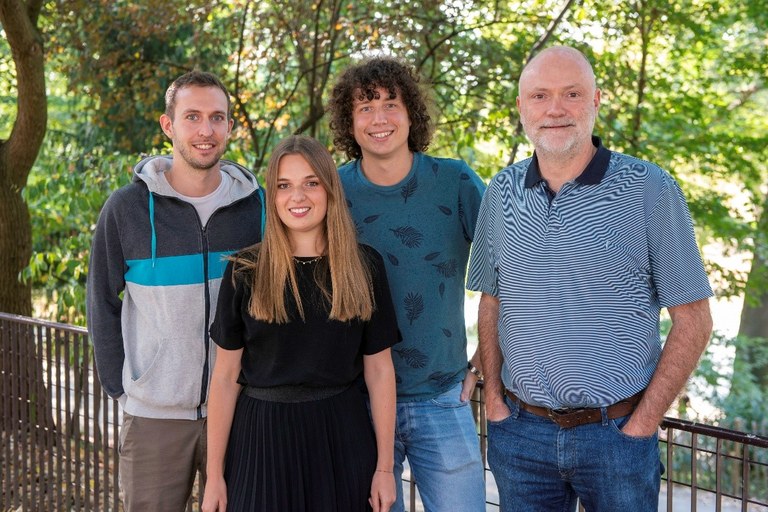
PICTURE BY CHRISTOPHE SWIJSEN
From left to right: Richard Coos, Margot Cardinal, Sébastien Penninckx and Stéphane Lucas
Publications and awards
NISM members Luca Fusaro and Nikolay Tumanov published in Nature: The self-assembly of a simple organic molecule produces crystalline phases of extraordinary complexity
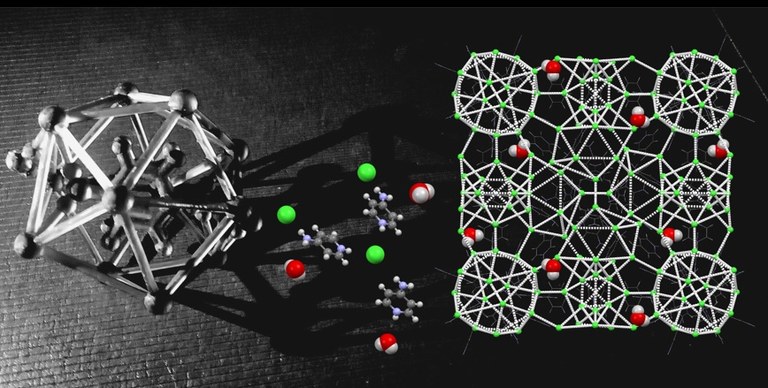 An international team involving two UNamur researchers, Dr. Luca Fusaro (NISM – PC2 platform) and Dr. Nikolay Tumanov (NISM, CBS Laboratory and PC2 platform) has discovered a family of complex crystal structures of fampridine
An international team involving two UNamur researchers, Dr. Luca Fusaro (NISM – PC2 platform) and Dr. Nikolay Tumanov (NISM, CBS Laboratory and PC2 platform) has discovered a family of complex crystal structures of fampridine
hydrochloride, which may have perspectives for the design of new classes of materials with tunable physicochemical properties.
This study represents a reality check for the crystal engineering community, aimed to investigate and design crystalline material with specific properties. The fact that a simple organic molecule can self-assemble to form crystal structure of extraordinary complexity confirms that the comprehension of this phenomenon is still far from being achieved. However, the observation of spherical aggregates of molecules in the liquid state opens new perspectives for the design of new classes of functional materials.
This research has been possible thanks to the high-level equipment hosted by the PC2 technological platform funded by UNamur and the FNRS.
Congratulations to Luca and Nikolay for their impressive achievements!
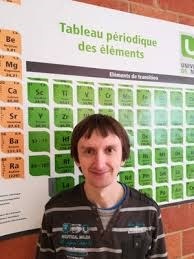
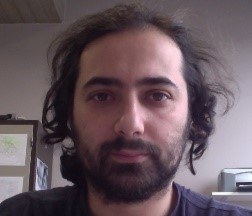
Nikolay Tumanov and Luca Fusaro
Article link: https://doi.org/10.1038/s41586-021-03194-y
Contact: Luca Fusaro - More information: https://platforms.unamur.be/pc2/index
European Symposium prize for Gaetano RICCI
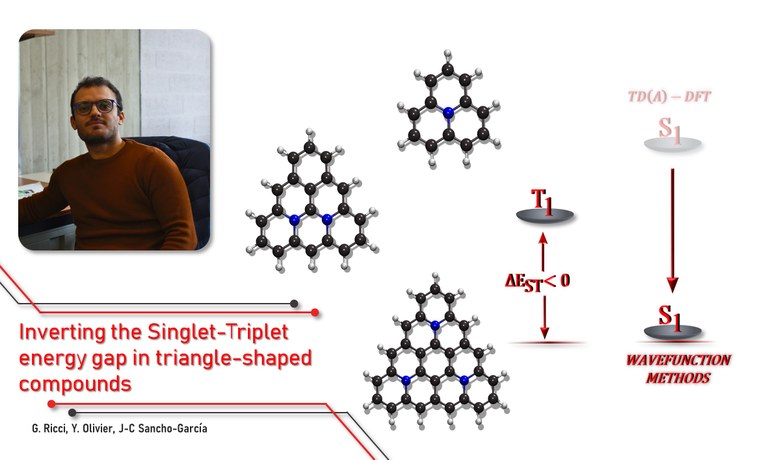
Gaetano Ricci, PhD student supervised by Prof. Yoann Olivier, obtained one of the two prizes for the best presentation granted by the European Symposium on Computing Pi-Conjugated Compounds (CpiC), in January 2021.
Gaetano presented the results of a collaborative work with Prof. Juan-Carlos Sancho-Garcia, from the University of Alicante in Spain, entitled "Inverting the Singlet-Triplet Excitation Energy Gap in Triangle-Shaped Molecular Emitters". This study dealt with the development of a new design strategy of molecular compounds for improving Organic Light-Emitting Diodes (OLEDs) efficiencies.
An MDPI Applied Sciences travel grant awarded to Michaël Lobet
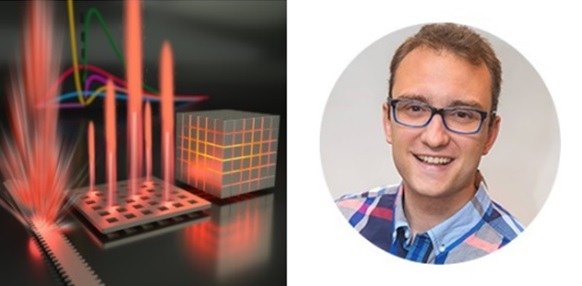
Dr. Michaël Lobet is a postdoctoral researcher within NISM, appointed to the Laporatory of Solid-State Physics (LPS). He has been granted of an MDPI award, which will enable him to finance part of the costs for his participation as a guest speaker at the International Society of Optics and Photonics SPIE conference in San Diego, USA, next August.
Lobet research interests combine photonics, materials science, quantum and solid-state physics. He works on light-matter interactions at the nanometric scale in the broad sense: perfect absorption using metamaterials, plasmonics, non-linear optics, photovoltaics, 2D electrodynamics, materials with a refractive index near zero, molecular electronics and biophotonics.
The Applied Sciences Awards 2021 were granted to nine outstanding young researchers (https://www.mdpi.com/journal/applsci/announcements/2845) in various fields. Besides Applied Sciences, MDPI awards cover many other topics, which are addressed by the research activities of NISM researchers, such as Molecular Sciences, Biosensors, Biomaterials, Biomolecules, Polymers, Condensed Matter, Chemosensors, Colloids and Interfaces, Nanomaterials, Physics, Photonics, Catalysts, Coatings, among others. Then, MDPI awards are an interesting instrument for all NISM members looking for international grants and conference fees supports!
PhDs and post-docs in NISM
PhD degree for Pierre HIRCHENHAHN from NISM
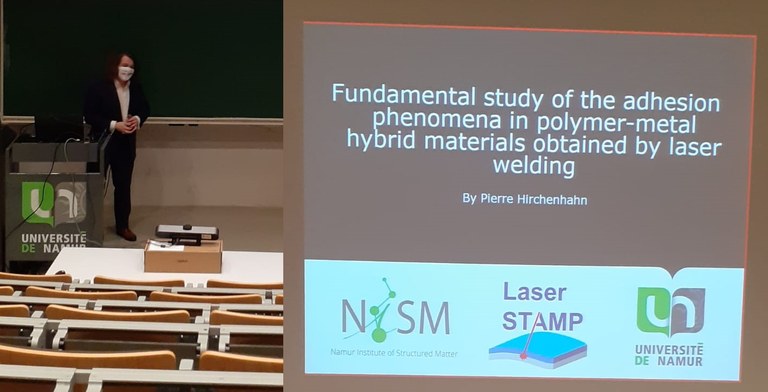
On February 5th 2021, Pierre HIRCHENHAHN obtained his PhD in Sciences, with a thesis entitled "Fundamental study of the adhesion phenomena in polymer-metal hybrid materials obtained by laser welding".
The jury members were Prof. Laurent Houssiau (UNamur, supervisor), Prof. Robert Sporken (UNamur), Dr. Céline Noël (IMEC), and Profs. Peter Plapper (University of Luxembourg), Didier Leonard (University of Lyon 1), and Herman Terryn (Free University of Brussels).
Latest publications in NISM
- "A General Strategy to Synthesize ADP-7-Azido-heptose and ADP-Azido-mannoses and Their Heptosyltransferase Binding Properties", Li, T., Tikad, A., Fu, H., Milicaj, J., Castro, C.D., Lacritick, M., Pan, W., Taylor, E.A., and Vincent, S., Org. Lett. 2021, 23, 5, 1638–1642 (2021),
DOI=10.1021/acs.orglett.1c00048.
- "Complex structures arising from the self-assembly of a simple organic salt", Montis, R., Fusaro, L., Falqui, A., Hursthouse, M. B., Tumanov, N., Coles, S. J., Threlfall, T. L., Horton, P. N., Sougrat, R., Lafontaine, A., Coquerel, G. & Rae, A. D., Nature 590, 275–278 (2021),
DOI=10.1038/s41586-021-03194-y.
- “Benzo[1,2-b:4,5-b']dithiophene as a weak donor component for push-pull materials displaying thermally activated delayed fluorescence or room temperature phosphorescence”, Cardeynaels, T., Paredis, S., Danos, A., Vanderzande, D., Monkman, A. P., Champagne, B. & Maes, W., Dyes and pigments, 186 (2021),
DOI=10.1016/j.dyepig.2020.109022.
- "Surface-functionalized mesoporous gallosilicate catalysts for the efficient and sustainable upgrading of glycerol to solketal", Vivian, A., Soumoy, L., Fusaro, L., Fiorilli, S., Debecker, D. P. & Aprile, C., Green Chemistry, 23, 1, p. 354-366 (2021), DOI=10.1039/D0GC02562C
- "CVD growth of self-assembled 2D and 1D WS2 nanomaterials for the ultrasensitive detection of NO2", Alagh, A., Annanouch, F. E., Umek, P., Bittencourt, C., Sierra-Castillo, A., Haye, E., Colomer, J. F. & Llobet, E., Sensors and Actuators B: Chemical. 326, 128813 (2021),
DOI=10.1016/j.snb.2020.128813.
- “Probing neutron-hidden neutron transitions with the MURMUR experiment”, Stasser, C., Terwagne, G., Lamblin, J., Méplan, O., Pignol, G., Coupé, B., Kalcheva, S., Dyck, S. V. & Sarrazin, M., The European Physical Journal C, 81, 17 (2021),
DOI=10.1140/epjc/s10052-021-08829-y.
- "Second-order nonlinear optical properties of Λ-shaped pyrazine derivatives", Castet, F., Gillet, A., Bureš, F., Plaquet, A., Rodriguez, V. & Champagne, B., Dyes and pigments. 184, 108850 (2021),
DOI=10.1016/j.dyepig.2020.108850.
- "Effect of indium incorporation, stimulated by UHV treatment, on the chemical, optical and electronic properties of ZnO thin film", Bedrouni, M., Kharroubi, B., Ouerdane, A., Bouslama, M., Guezzoul, M., Caudano, Y., Bensassi, K. B., Bousmaha, M., Bezzerrouk, M. A., Mokadem, A. & Abdelkrim, M., Optical Materials. 111, 10 p., 110560 (2021),
DOI=10.1016/j.optmat.2020.110560.
- “In vitro Assessment of the DNA Damage Response in Dental Mesenchymal Stromal Cells Following Low Dose X-ray Exposure”, Lucas, S., Frontiers in Public Health, 9, 584484 (2021),
DOI=10.3389/fpubh.2021.584484.
- “Molecular Mechanism for the Self-supported Synthesis of Graphitic Carbon Nitride from Urea Pyrolysis”, Mukhopadhyay, T. K., Leherte, L. & Datta, A., The Journal of Physical Chemistry Letters, 12, 1396-1406 (2021),
DOI=10.1021/acs.jpclett.0c03559.
- "Multiresolution non-covalent interaction analysis for ligand-protein promolecular electron density distributions", Leherte, L., Theoretical Chemistry Accounts. 140, 1, 13 p., 9 (2021),
DOI=10.1007/s00214-020-02705-w.
- "Nano-graphene-platelet/Brilliant-green composite coated carbon paste electrode interface for electrocatalytic oxidation of flavanone Hesperidin", Manasa, G., Mascarenhas, R. J., Bhakta, A. K. & MEKHALIF, Z., Microchemical Journal. 160, Part B, 105768 (2021), DOI=10.1016/j.microc.2020.105768.
- "Structure-Based Identification of Inhibitors Disrupting the CD2-CD58 Interactions", Tripathi, N., Leherte, L., Vercauteren, D. & Laurent, A. D., Journal of computer-aided molecular design, 35(3):337-353 (2021)
DOI=10.1007/s10822-020-00369-z.
Image of the newsletter
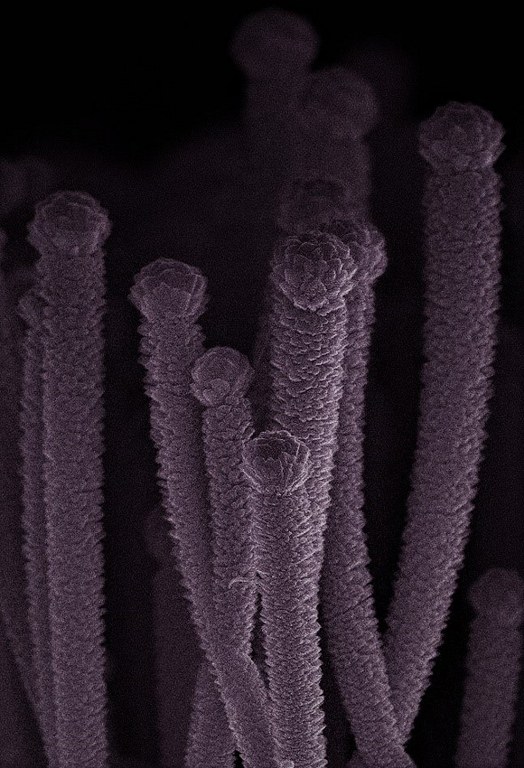
Electron microscopy image of Silicon nanowires made by vapor-liquid-solid method (Maxime HARNOIS, IETR, Rennes), and coated by chromium nitride using reactive magnetron sputtering (Emile HAYE, LARN-NISM).
Subscribe to NISM newsletter here.
To publish your works, events, seminars, conferences, publications, or other news in the NISM newsletter, send it please to the contact below.
Contact
Becher HAJ IRAHIM
Executive Assistant
executive-assistant.nism@unamur.be
www.nism.be

